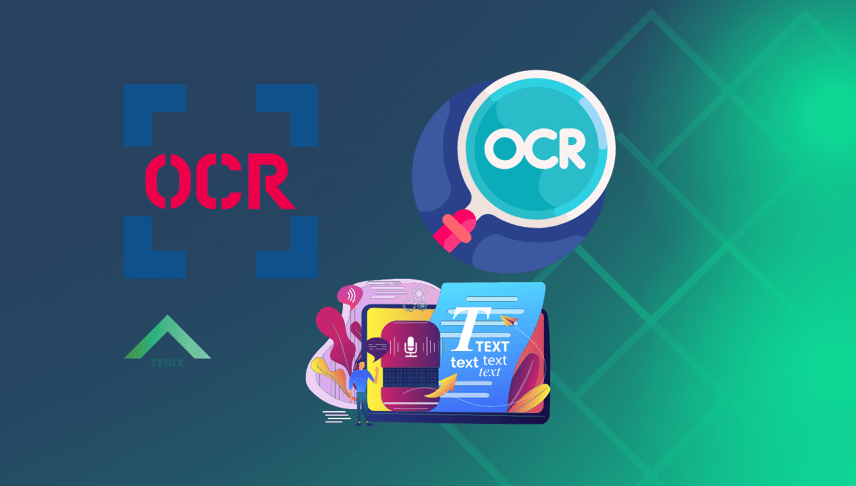Optical Character Recognition (OCR) in AI: Revolutionizing Text Extraction
ARTIFICIAL INTELLIGENCE
5/25/20243 min read


In the field of artificial intelligence (AI), optical character recognition (OCR) is a game-changing technique that has completely changed how we interact with written and printed information. Through the process of transforming diverse types of text—like scanned documents, text photographs, or even images with text—into machine-readable data, optical character recognition (OCR) has emerged as a key technology in a wide range of industries. The foundations of OCR, its development, and its noteworthy effects on a range of sectors are examined in this article.
Fundamentals of OCR
OCR is essentially the technique of reading characters from paper documents and digitizing them. After scanning the page and processing the image to identify the characters, the OCR system transforms the characters into a digital format that may be electronically modified, searched, and saved. There are multiple steps in this process:
Image Preprocessing:
Image preprocessing entails boosting the quality to increase accuracy, reducing noise from the image, and correcting distortions.
Text Recognition:
Using machine learning methods, pattern recognition, and feature extraction, the primary OCR engine recognizes individual characters.
Post-processing:
This is fixing typos, arranging the content, and transforming it into the intended output format—a Word document, PDF, or plain text, for example.
Evolution of OCR
OCR's journey started in the early 1900s with mechanical tools meant to help the blind and visually challenged. But OCR didn't start to become widely used until the invention of digital computers. The early OCR systems needed a lot of human interaction and could only recognize a limited set of fonts.
With the development of AI and machine learning, OCR has changed dramatically. In order to gain greater accuracy and flexibility, modern OCR systems make use of deep learning techniques, including Convolutional Neural Networks (CNNs) and Recurrent Neural Networks (RNNs). With the ability to handle a large variety of fonts, languages, and even intricate layouts, these systems have increased the versatility and power of OCR.
Applications of OCR in Various Industries
OCR is widely used in many different industries due to its effective text digitization capabilities. Among the noteworthy applications are:
Healthcare
OCR is used in the medical field to digitize medical forms, prescriptions, and patient information. Through improved data administration, expedited information retrieval, and decreased paperwork, healthcare practitioners can enhance patient care by transforming these papers into electronic health records (EHRs).
Banking and Finance
Data entry procedures in the banking industry can be automated thanks to OCR technology. By processing checks, invoices, and other financial documents, it speeds up transaction times and lowers manual mistake rates. For instance, OCR is frequently used by mobile banking apps to scan and deposit cheques.
Legal Industry
OCR helps the legal sector by digitizing a significant volume of contracts, case files, and legal documents. This facilitates rapid information retrieval and searches, which expedites case management and legal research.
Retail and E-commerce
OCR is used by retailers and e-commerce sites to automate inventory control and optimize workflows. OCR improves accuracy in inventory tracking and customer service by digitizing product labels, barcodes, and receipts.
Government and Public Sector
OCR is used by government organizations to digitize tax forms, public records, and other official documents. In addition to enhancing data accessibility and record-keeping, this also makes it possible to process papers more quickly, which enhances citizen services.
Challenges and Future Prospects
Even with these improvements, OCR still has a number of issues. Because different people have different handwriting styles, handwritten text identification is still a challenging issue. Furthermore, complicated layouts or papers with poor image quality might be a challenge for OCR systems.
Improving OCR capabilities is the main goal of current AI and machine learning research in order to overcome these obstacles. Combining Natural Language Processing (NLP) and OCR to improve accuracy and usability by better understanding the context and semantics of the identified text is one promising topic.
Conclusion
The way we handle text has changed dramatically as a result of optical character recognition, which makes it possible to digitize and manage enormous volumes of data seamlessly. Because of its integration with AI, OCR is now more accurate, effective, and versatile. With possible advances ready to surpass present restrictions and further alter businesses globally, the future of OCR appears bright as technology continues to advance.
In conclusion, OCR in AI is an essential technology that improves accessibility, productivity, and efficiency in a variety of fields—it is more than just a tool for text digitization. Without a doubt, its continuous advancement will be very important in determining how data processing and information management develop in the future.


